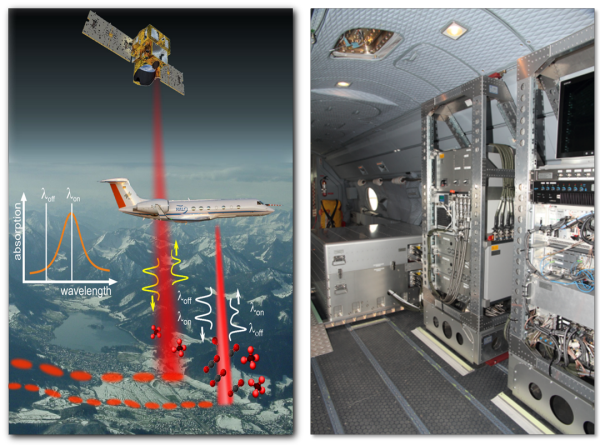Active Remote Sensing
The Integrated Path Differential Absorption Lidar (IPDA) technique using hard target reflection in the near IR has the potential to deliver GHG column measurements from aircraft or space with unprecedented accuracy. IPDA largely eliminates the contribution of atmospheric scattering by particles and clouds which greatly affects the achievable accuracy of passive remote sensing instruments. Moreover, this technique can be applied during daylight or nighttime and at all latitudes since it does not depend on solar radiation.
The IPDA technique will be employed by the German-French climate mission MERLIN (Methane Remote Sensing LIDAR Mission) planned for launch around 2021 to measure methane on a global scale. At the Institute of Atmospheric Physics of DLR, an airborne demonstrator dubbed CHARM-F has been devised that is capable of measuring both important greenhouse gases, CO2 and CH4, at the same time. CHARM-F is one of the key instruments to be flown on the HALO aircraft.

The IPDA technique uses laser radiation at two different wavelengths which are differently absorbed by the target species that are reflected from a "hard target" which is either the Earth's surface or cloud tops.
In the framework of a BMBF-funded project CHARM-F has been designed, built, and certified for airborne operation. First airborne measurements (see references) have shown the capabilities of this system which is an asset in the context of the AIRSPACE goals.